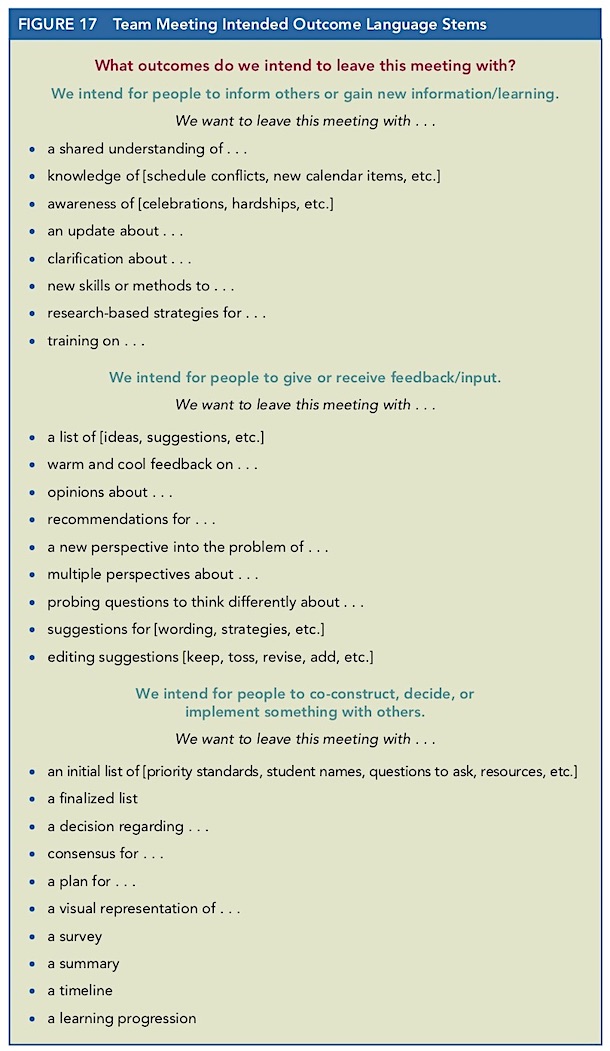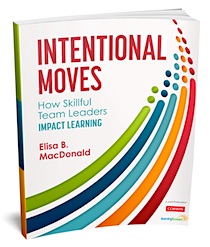Leadership Tips for Summer Collaboration
“Schooool’s out for summer!” Our students might enjoy rocking out to Alice Cooper’s song, but for many educators, summer is not only a chance to relax and recharge but a great time to collaborate with colleagues.
I can remember gathering at my fellow administrator’s Cape house with our team for a few days of reflection and planning. We would reconnect, reflect, and dig into initiatives for the following year, all while enjoying a cool beverage amid the sounds of seagulls.
Whether you are leading a retreat, working with a curriculum task force, or planning with your grade-level teammates, keep the following four intentions at the center of your facilitation.
✻ Plan purposeful meetings
Even if your summer team convenes wearing shorts around someone’s pool and you want to keep a casual vibe, you and your colleagues still deserve to leave your meeting with new learning and deliverables.
Avoid designing your agenda around activities. Instead, aim for clear intended outcomes. Ask yourself the following questions as you craft your summer meeting agenda:
► What information or learning do we need to leave this meeting with?
► What input or feedback do we need to give or get from people in this meeting?
► What decision, product or deliverable do we need to make in this meeting?
Here are a few sentence stems to help you articulate your meeting’s intended outcomes:

Figure 17, pp 174-175, Intentional Moves by Elisa B. MacDonald © Corwin, 2022. Used with permission.
✻ Foster inclusivity
Unless your whole faculty is at your meeting, most likely you are privileged to join a subgroup of leaders. Even if you and the other participants were thoughtfully selected to represent a diverse team, there are still people who look and think differently from you, who are not on your retreat or task force, and who will be affected by your decisions. Find ways to bring in their voices. Some examples might include:
► Analyze end-of-year surveys from students, families and faculty.
► Together view professional texts (written publications, videos, podcasts etc.) authored by diverse authors to gain perspectives different from those on your team.
► Form subcommittees to reach out to particular stakeholders through interviews or a light summer event such as a potluck dinner.
✻ Focus on a student-centered challenge
It’s almost a luxury to get three or so days to engage in idea generating and problem solving with your colleagues who, during the school year, you barely get more than 22 minutes to eat lunch with.
If you are facilitating team meetings this summer, please do carve out time for adults to reconnect, share wins, exchange resources, and even commiserate over the challenges of the past school year.
But also bring the conversation back to the student-centered challenges – those problems related to systemic injustices, inadequate policies, racial and economic inequities, misunderstood learning disabilities, and opportunity gaps. Delve into the issues facing your students that “keep you up at night,” as this is what drives people to collaborate.
To stay student-centered, you can lead an activity I created based on a simple graphic organizer I learned from a high school teacher with whom I worked. It’s called Above the Line/Below the Line.
- Draw a horizontal line on chart paper.
- Above the line write the name of one initiative that you and your team are coming together to flesh out.
- Below the line, write (with as little jargon as possible) why this initiative is critically important to students.
- Then go forward with your team to plan the initiative, pausing with each major decision, to check that your design supports the student-statements you wrote below the line.
Example:
Deeper Learning Initiative
____________________________________
All students, regardless of identity and learning profile, are capable of critical thinking and complex and creative problem solving. Students deserve opportunities to engage in learning that uses these gifts.
Students are more engaged when they see the relevance of what they are learning.
✻ Plan to collaborate during implementation
As teacher and leadership teams, we tend to be good at dedicating substantial collaborative time in the summer to plan initiatives, write curriculum, and design instruction. Once the busy school year starts and implementation is underway, we are inclined to cut back on collaboration.
We “give teachers space” to implement on their own with the occasional meeting for teachers to “report out” how things are going. I always found this counterintuitive, as implementation is when things get real and educators need their colleagues the most.
Here are a few ways in which teachers will appreciate collaborating with colleagues during implementation of a new initiative, curriculum or instructional method:
► Conduct a “dry-demo” lesson (without students) in which one teacher on the team practices a new instructional strategy on their colleagues in a meeting before implementing with their students in the classroom.
► Pair-up for peer observation. Teachers on the team partner to observe one another teach a specific piece of a new curriculum or instructional strategy. After both have had a chance to observe each other, they discuss how students responded to what was taught and make adjustments. Then they share their findings to the whole team in a meeting.
► Take turns bringing in student work for the group to analyze. Look for trends so that your team can adjust instruction for specific student groups.
Summer is a rejuvenating time filled with promise. Be skillful and intentional in how you lead your meetings or professional development. Not only will this set your team up for stronger collaboration during the school year, but people won’t mind giving up that beach day.
Sign up for Elisa’s summer virtual minicourse:
Skillful Intentional Leadership
August 1-4, 2023 • 10-11:30 AM ET
Read our review of Intentional Moves,
Elisa’s recent book about leading teams.

Elisa is also author of the best-seller The Skillful Team Leader: A Resource for Overcoming Hurdles to Professional Learning for Student Achievement (Corwin). Visit Elisa’s consulting website and follow her on Twitter @elisaBmacdonald.
































